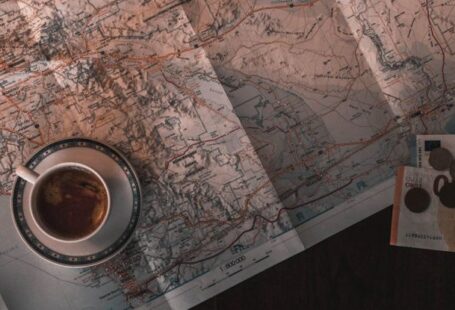Understanding how to read a map is a valuable skill that can come in handy in various situations, from navigating unfamiliar territories to planning a road trip or even exploring the great outdoors. Maps provide us with a wealth of information about our surroundings, but to fully utilize them, it’s essential to comprehend the symbols and scales used in map design. By familiarizing yourself with these key elements, you can decipher maps with ease and accuracy. In this article, we will delve into the world of map symbols and scales, shedding light on how to interpret them effectively.
**Decoding Map Symbols: Unlocking the Key to Navigation**
Maps are visual representations of geographical areas, and they use symbols to convey information about features such as roads, rivers, parks, and landmarks. Understanding these symbols is crucial for interpreting a map correctly. While different maps may use slightly varied symbols, many common ones are universally recognized.
Roads and highways are often depicted as thin lines of various widths, with different colors signifying the type of road (e.g., interstate, state highway, local road). Rivers and water bodies are typically shown as blue lines, while green areas represent parks or forests. Symbols for landmarks such as schools, hospitals, and airports are usually small icons that are easy to spot on the map.
Topographic maps, which provide detailed information about terrain and elevation, feature contour lines to depict changes in elevation. These lines help you visualize the shape of the land and identify features like hills, valleys, and plateaus. Understanding how to read contour lines can give you valuable insights into the topography of the area you are exploring.
**Cracking the Code of Map Scales: Navigating Distance and Proportion**
Map scales are another critical component of map reading, as they indicate the relationship between distances on the map and actual distances on the ground. Scales can be presented in different forms, such as verbal scales (e.g., 1 inch equals 1 mile), graphic scales (a bar scale showing distances in miles or kilometers), or representative fraction scales (e.g., 1:24,000).
Verbal scales are straightforward to understand, as they explicitly state the ratio between map distance and real-world distance. Graphic scales, often found at the bottom or side of a map, provide a visual representation of distances using a bar with markings corresponding to specific lengths. By comparing the scale bar to the map, you can accurately determine distances between points.
Representative fraction scales express the map’s scale as a ratio, where the first number represents the map distance, and the second number represents the real-world distance. For example, a scale of 1:50,000 means that one unit of measurement on the map represents 50,000 units of the actual distance. Calculating distances using representative fractions involves simple arithmetic, making it a useful tool for measuring distances accurately on a map.
**Navigating with Confidence: Applying Map Skills in Real Life**
Now that you have gained insight into map symbols and scales, it’s time to put your knowledge into practice. Whether you are planning a hiking trip, navigating a city, or simply exploring a new area, reading maps effectively can enhance your experience and help you navigate with confidence.
When using a map, start by familiarizing yourself with the key or legend to understand the symbols used. Pay attention to the scale to gauge distances accurately and plan your route accordingly. Practice interpreting contour lines to visualize the terrain and identify prominent features in the landscape.
By honing your map-reading skills, you can unlock a world of possibilities and embark on adventures with a newfound sense of direction. Remember, maps are not just tools for navigation; they are gateways to discovery and exploration. So, grab a map, decode the symbols, scale the distances, and set off on your next journey with confidence and clarity. Happy exploring!





